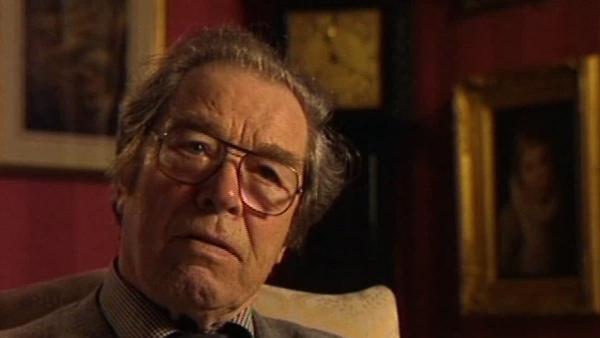NEXT STORY

Handmade repeater mechanisms
RELATED STORIES

NEXT STORY

Handmade repeater mechanisms
RELATED STORIES


|
Views | Duration | |
|---|---|---|---|
| 41. Each Daniels watch is different | 1 | 1711 | 02:06 |
| 42. Handmade repeater mechanisms | 1618 | 00:51 | |
| 43. I kept some of my best watches to amuse me | 1740 | 03:06 | |
| 44. My struggles to get the Swiss watch industry interested | 2029 | 02:50 | |
| 45. The co-axial escapement was a superlative timekeeper | 1969 | 02:40 | |
| 46. The difference between lever and co-axial escapement | 4570 | 01:46 | |
| 47. Who would produce the co-axial escapement for me? | 1898 | 01:31 | |
| 48. Persuading Omega to take an interest in the co-axial escapement | 1 | 2554 | 05:23 |
| 49. Putting on a show at the Baselworld Fair | 1619 | 00:56 | |
| 50. Patek Philippe produce a poor replica of the co-axial escapement | 2427 | 02:43 |


With so much work to do, it was only possible to make one watch each year and I did want all the watches to be different and so I began to think of ways of improving... little ideas like, when a watch is lying horizontal it keeps a different time to that which it keeps when it's vertical, due to the change in friction on the components. And I devised some jewels specially made to overcome this problem, and they were very successful. Once again, I took them Switzerland but they weren't interested. You know they said well, you know, if the watch keeps 10 seconds different time lying down to when it's standing up, well nobody cares. But I did care, it had to be right for me, I didn't want to fall into the same traps as others.
And then, of course, as the years went by I began to think more boldly about the watches and more complications came in, such as the watches with two trains. They weren't more complicated, but they were more complex and there was many more components to make... twice as many components in the one watch. But these watches have got rather a special place in horology. They are very highly regarded because they have the two separate trains culminating in a single escapement. The two feed into the single escapement so that both contribute to the timekeeping as both are governed by the escapement. This is a system that had not been used before and it is very successful, it keeps a phenomenal rate of time. So I devised it simply to do something different, but it turned out to be a very useful invention in the end.
George Daniels, CBE, DSc, FBHI, FSA (19 August 1926 - 21 October 2011) was an English watchmaker most famous for creating the co-axial escapement. Daniels was one of the few modern watchmakers who could create a complete watch by hand, including the case and dial. He was a former Master of the Clockmakers' Company of London and had been awarded their Gold Medal, a rare honour, as well as the Gold Medal of the British Horological Institute, the Gold Medal of the City of London and the Kullberg Medal of the Stockholm Watchmakers’ Guild.
Title: Each Daniels watch is different
Listeners: Roger Smith
Roger Smith was born in 1970 in Bolton, Lancashire. He began training as a watchmaker at the age of 16 at the Manchester School of Horology and in 1989 won the British Horological Institute Bronze Medal. His first hand made watch, made between 1991 and 1998, was inspired by George Daniels' book "Watchmaking" and was created while Smith was working as a self-employed watch repairer and maker. His second was made after he had shown Dr Daniels the first, and in 1998 Daniels invited him to work with him on the creation of the 'Millennium Watches', a series of hand made wrist watches using the Daniels co-axial escapement produced by Omega. Roger Smith now lives and works on the Isle of Man, and is considered the finest watchmaker of his generation.
Tags: single escapement
Duration: 2 minutes, 7 seconds
Date story recorded: May 2003
Date story went live: 24 January 2008